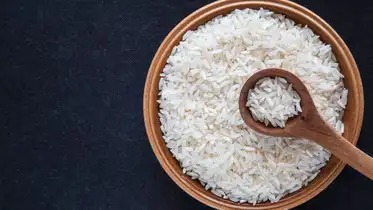
Follow WOWNEWS 24x7 on:

In a country where rice is more than just a staple—it's a cultural cornerstone—new research and expert insights are reshaping how we think about cooking it. A recent wave of nutrition-focused reporting from Times of India, NDTV Food, and Supathya has spotlighted the science behind rice preparation, revealing how simple tweaks in technique can reduce starch, lower calorie absorption, and preserve vital nutrients. Whether you're managing blood sugar, watching your weight, or simply seeking a healthier plate, this guide offers a real-time, evidence-backed approach to cooking rice the right way.
Why Starch Matters
Excess starch in rice contributes to higher glycemic load, which can spike blood sugar levels and lead to sluggish digestion. While rice itself is not inherently unhealthy, the way it's cooked can either amplify or mitigate its nutritional impact. Experts now recommend methods that reduce digestible starch while retaining fiber, vitamins, and minerals—especially important for those with diabetes, PCOS, or metabolic concerns.
Key Highlights from the Latest Findings
1. Rinse Until Clear
- Before cooking, rinse rice thoroughly under cold water
- This removes surface starch and improves texture
- Gently rub the grains with your fingers until the water runs clear
- This step also helps eliminate some pesticide residue and dust
2. Boil and Drain Method
- Cook rice in excess water—typically 4 to 5 cups per 1 cup of rice
- Once the rice is tender, drain the water using a fine sieve
- This technique flushes out soluble starch and reduces calorie density
- It’s especially effective for long-grain varieties like basmati and jasmine
3. Double-Cook for Arsenic Reduction
- Parboil rice for 5–7 minutes in excess water
- Drain and replace with fresh water, then cook until done
- This two-step method can reduce arsenic levels by up to 50 percent
- Particularly useful for rice grown in regions with high groundwater contamination
4. Refrigerate to Boost Resistant Starch
- Once cooked, cool rice and refrigerate it overnight
- This process increases resistant starch, which resists digestion
- Resistant starch promotes gut health and lowers glycemic response
- Reheated rice retains these benefits, making it ideal for meal prep
5. Avoid Pressure Cooking for Starch Control
- Pressure cooking locks in starch and doesn’t allow for draining
- While it preserves nutrients, it’s not ideal for reducing starch
- Use this method only when time is short and starch isn’t a concern
6. Steam for Nutrient Retention
- Steaming soaked rice preserves vitamins and minerals
- It also results in a fluffier texture with less stickiness
- Best suited for medium- and short-grain rice used in sushi or risotto
7. Choose the Right Rice Type
- Long-grain rice has lower starch and is easier to de-starch
- Short-grain rice is starchier and harder to modify without affecting texture
- Brown rice retains more fiber but requires longer cooking and soaking
8. Repurpose Rice Water (Ganji)
- The starchy water drained from rice can be reused
- Rich in B vitamins and prebiotics, it’s used in Ayurvedic practices
- Can be consumed as a light broth or used in skincare routines
Real-Time Kitchen Tips
- Soak rice for 30 minutes before cooking to reduce cooking time and improve nutrient absorption
- Add a few drops of lemon juice or coconut oil while boiling to further reduce glycemic impact
- Use stainless steel or clay pots instead of non-stick cookware to avoid chemical leaching
Conclusion
Rice doesn’t have to be a nutritional compromise. With the right cooking method, it can be a source of sustained energy, gut-friendly fiber, and essential micronutrients. Whether you’re boiling, steaming, or refrigerating, the goal is simple: reduce digestible starch, retain the good stuff, and make every grain count. These techniques aren’t just trends—they’re backed by science and rooted in tradition.
Sources: Times of India, NDTV Food, Supathya, Poonam’s Kitchen, MSN India



